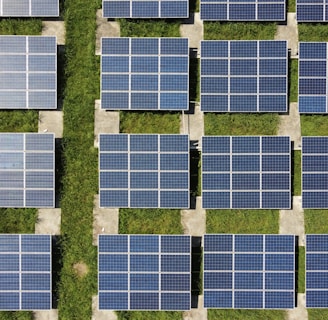Solar Power: Harnessing the Sun in Arid Regions


Introduction
Solar power has emerged as a significant player in the renewable energy sector, providing a clean and sustainable alternative to traditional sources of energy. While solar technology has been widely adopted in various parts of the world, its potential in arid regions, particularly deserts, is gaining increasing attention. This article explores the advancements in solar technology and how these arid regions are uniquely positioned to harness the power of the sun.
The Advancements in Solar Technology
In recent years, there have been remarkable advancements in solar technology, making it more efficient and cost-effective. The development of photovoltaic (PV) cells, which convert sunlight into electricity, has played a crucial role in the growth of solar power. These cells are now capable of capturing a higher percentage of sunlight and converting it into usable energy.
Furthermore, the manufacturing process of PV cells has become more streamlined, resulting in reduced production costs. This has made solar power more accessible and affordable for both residential and commercial use. Additionally, the integration of energy storage systems, such as batteries, has addressed the issue of intermittent power supply, allowing solar energy to be utilized even during non-sunlight hours.
The Potential of Arid Regions
Desert regions, characterized by their vast stretches of open land and abundant sunlight, offer immense potential for harnessing solar power. These areas receive high levels of solar radiation throughout the year, making them ideal for large-scale solar energy projects.
One of the primary advantages of arid regions is the availability of land. Unlike urban areas or regions with dense vegetation, deserts provide vast expanses of open space, allowing for the installation of large solar farms. The flat terrain and minimal obstructions also facilitate the efficient positioning of solar panels, maximizing their exposure to sunlight.
Moreover, arid regions often have a low population density, reducing the potential for land-use conflicts. This makes it easier to secure the necessary land for solar power projects and minimizes the impact on local communities.
Challenges and Solutions
While arid regions offer great potential for solar power, they also present unique challenges that need to be addressed. One of the primary challenges is the extreme heat and dust prevalent in these areas. High temperatures can reduce the efficiency of solar panels, leading to a decrease in energy production.
To overcome this challenge, solar panels designed for desert environments are equipped with advanced cooling systems. These systems use water or air to dissipate heat, ensuring that the panels operate optimally even in high-temperature conditions. Additionally, regular cleaning of the panels helps to remove dust and debris, maintaining their efficiency over time.
Another challenge is the transmission of solar power from remote desert regions to populated areas. To address this, innovative solutions such as high-voltage direct current (HVDC) transmission lines have been developed. HVDC lines can transport electricity over long distances with minimal power loss, making it feasible to transmit solar energy from arid regions to urban centers.
Economic and Environmental Benefits
The harnessing of solar power in arid regions brings both economic and environmental benefits. From an economic perspective, solar energy projects create employment opportunities, both during the construction phase and in ongoing operations and maintenance. These projects also attract investment, stimulating local economies and contributing to regional development.
Furthermore, solar power reduces dependence on fossil fuels, which are finite resources and contribute to climate change. By utilizing the abundant sunlight in arid regions, we can significantly reduce greenhouse gas emissions and mitigate the impact of climate change. Solar energy is a clean and renewable source of power, making it a sustainable long-term solution for meeting our energy needs.
Conclusion
The advancements in solar technology, coupled with the unique characteristics of arid regions, present a tremendous opportunity for the harnessing of solar power. From the availability of land to the abundance of sunlight, these regions are well-suited to exploit this renewable energy source. By overcoming challenges and leveraging innovative solutions, we can unlock the full potential of solar power in arid regions, contributing to a sustainable and greener future.
